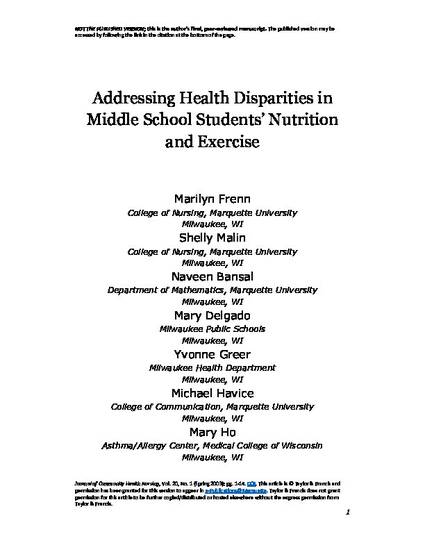
Those with low income, especially women of African American and Hispanic heritage have the greatest risk of inactivity and obesity. A 4-session (Internet and video) intervention with healthy snack and gym labs was tested in 2 (gym lab in 1) urban low–middle-income middle schools to improve low fat diet and moderate and vigorous physical activity.1 The gym lab was particularly beneficial (p = .002). Fat in diet decreased with each Internet session in which students participated. Percentage of fat in food was reduced significantly p = .018 for Black, White, and Black/Native American girls in the intervention group. Interventions delivered through Internet and video may enable reduction of health disparities in students by encouraging those most at risk to consume 30% or less calories from fat and to engage in moderate and vigorous physical activity.
Available at: http://works.bepress.com/michael_havice/2/

Accepted version. Journal of Community Health Nursing, Vol. 20, No. 1 (Spring 2003): 1-14. DOI. © 2003 Taylor & Francis. Used with permission.